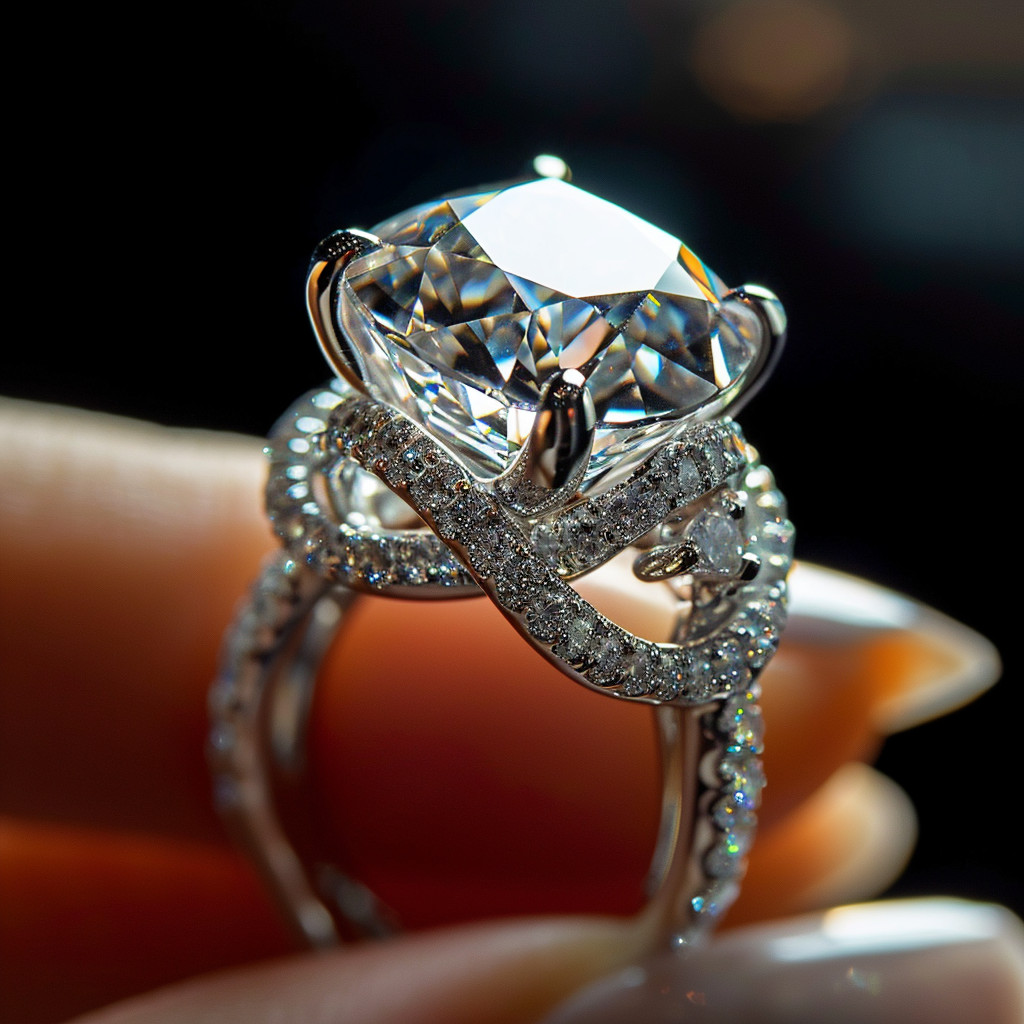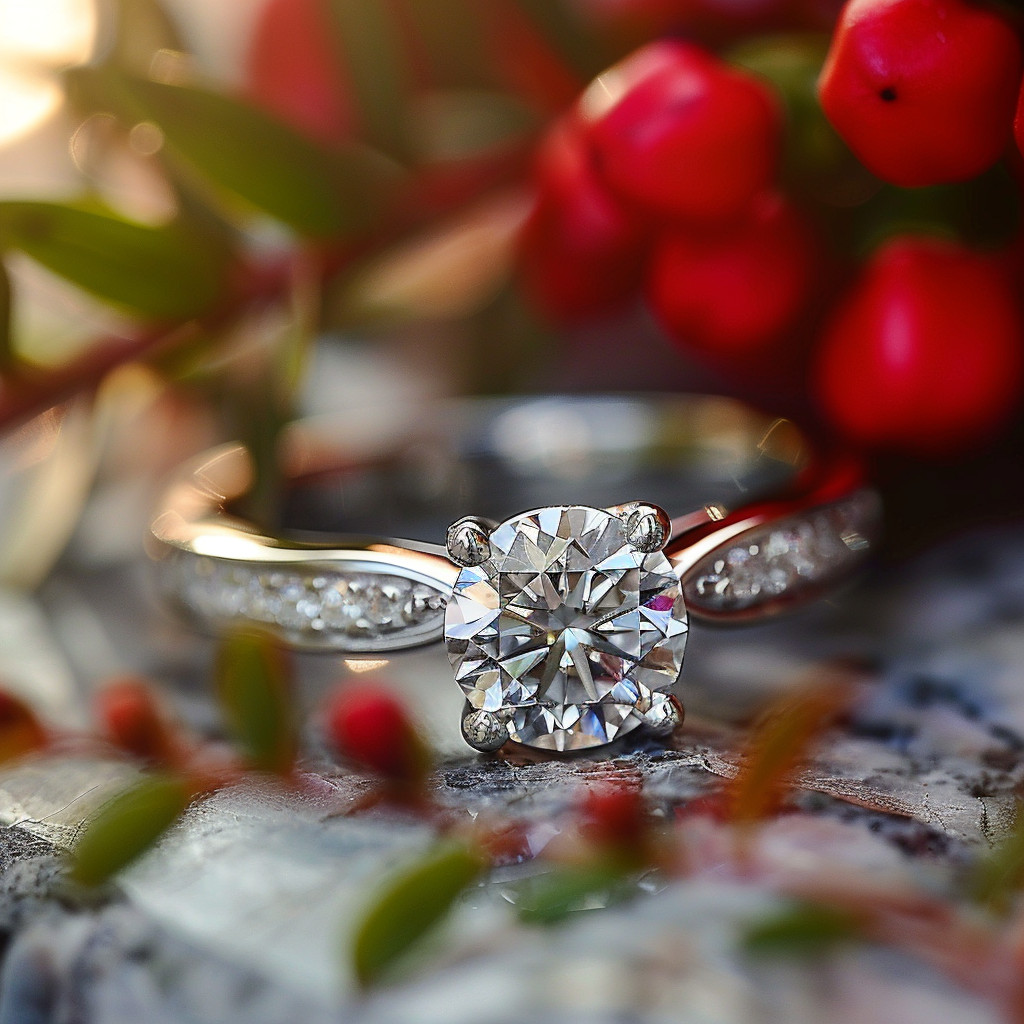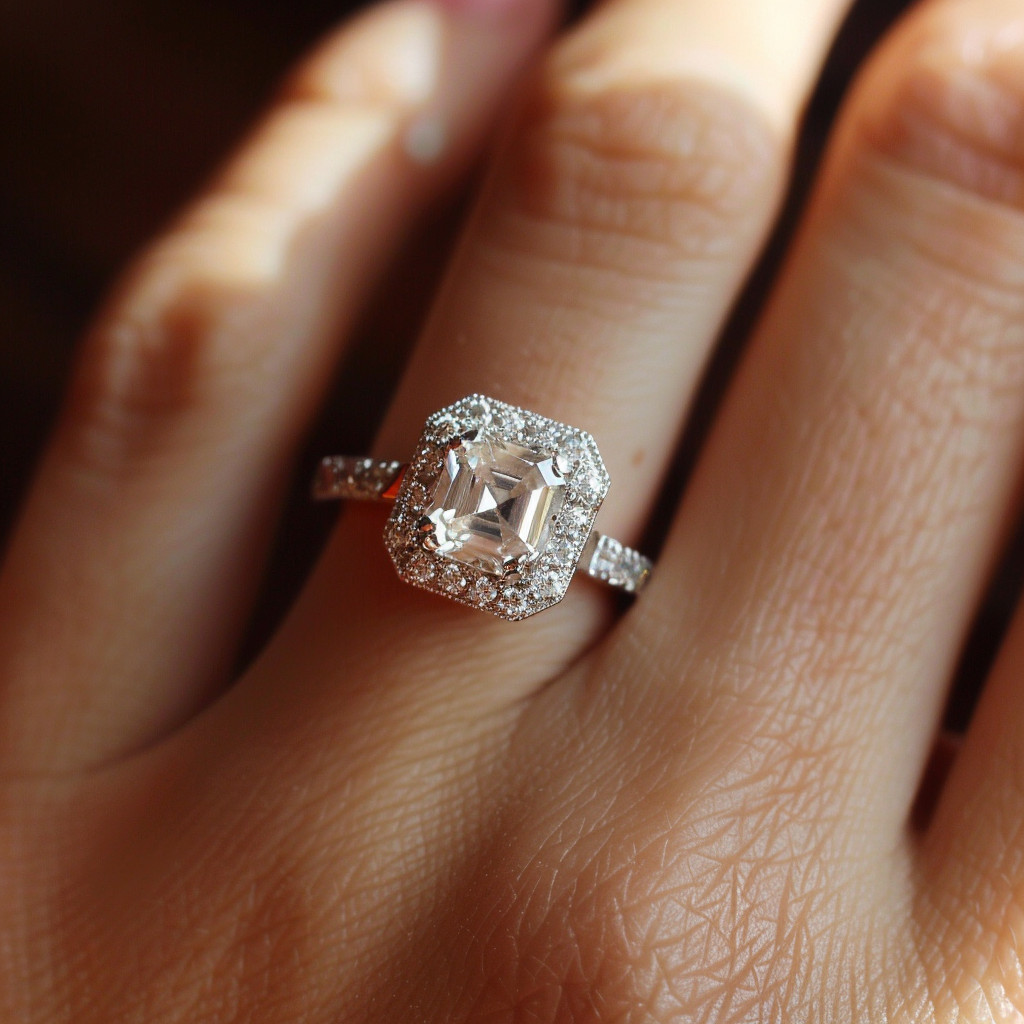Diamonds are often described as eternal symbols of love and commitment, making them the perfect choice for engagement rings. However, the journey of a diamond from the depths of the earth to the sparkling centerpiece of an engagement ring is a fascinating process that involves both natural wonder and human craftsmanship. In this article, we will explore each step of this journey in detail, tracing the path of a diamond from its formation to its final setting in a ring.
Average Cost of Engagement Rings Based on Carat Weight
The Birth of a Diamond: Formation and Extraction
Natural Formation
Diamonds are formed deep within the Earth’s mantle under conditions of intense heat and pressure. This process takes millions to billions of years. Carbon atoms bond in a crystal structure that creates the hardest natural substance known. These diamonds are then carried closer to the Earth’s surface through volcanic eruptions, embedded in rocks called kimberlites.
The formation of diamonds begins about 100 miles below the Earth’s surface in an environment of extreme heat (about 2,000 degrees Fahrenheit) and pressure (725,000 pounds per square inch). These conditions cause carbon atoms to bond in a unique way that forms a diamond’s crystal structure. This atomic arrangement is what makes diamonds incredibly hard and durable.
Over millions of years, volcanic activity pushes these diamonds to the Earth’s surface. They are transported in a rare type of magma called kimberlite, which forms kimberlite pipes. These geological formations are the primary sources of mined diamonds.
Mining
Once diamonds are near the surface, they must be extracted. There are several mining methods, including open-pit mining, underground mining, and alluvial mining. Each method has its own environmental impact and efficiency.
Open-Pit Mining
This method involves removing layers of sand and rock to reach diamond-bearing ore. It is commonly used for large, shallow deposits. Open-pit mining starts with the removal of topsoil and overburden to access the ore. Large machines and explosives are often used to break up the rock. The diamond-rich material is then transported to a processing plant where diamonds are extracted.
Underground Mining
When diamond deposits are located deep underground, tunnels are created to access the ore. This method is more complex and expensive. Miners create vertical shafts and horizontal tunnels to reach the diamond-bearing rock. The ore is then brought to the surface for processing. Underground mining is typically used when open-pit mining is not feasible due to depth and environmental concerns.
Alluvial Mining
This involves extracting diamonds from riverbeds and beaches where they have been deposited by natural erosion. Alluvial mining is often done by hand or with simple equipment. It can be more environmentally friendly than other methods but is labor-intensive and yields smaller amounts of diamonds.
Ethical Considerations
Ethical mining practices are crucial to ensure that diamonds are sourced responsibly. Many companies now adhere to the Kimberley Process, which aims to prevent “conflict diamonds” from entering the market. Conflict diamonds, also known as blood diamonds, are those mined in war zones and sold to finance armed conflict against governments.
The Kimberley Process Certification Scheme (KPCS) was established in 2003 to certify the origin of rough diamonds and ensure they are conflict-free. Participating countries must meet minimum requirements and implement national legislation to control diamond trade. While the Kimberley Process has reduced the flow of conflict diamonds, concerns about its effectiveness and loopholes remain.
Additionally, lab-grown diamonds are becoming a popular alternative, offering an ethical and environmentally friendly option. These diamonds are created in controlled environments using high-pressure, high-temperature (HPHT) or chemical vapor deposition (CVD) methods. They are chemically, physically, and optically identical to natural diamonds but do not involve the environmental and ethical issues associated with mining.
Ethical Sourcing of Diamonds Over Time
Sorting and Cutting: The Art of Shaping a Diamond
Sorting
Once diamonds are extracted, they are sorted based on their size, shape, color, and quality. This process involves both automated systems and human expertise. The rough diamonds are then categorized for industrial use or gemstone quality.
Sorting is a critical step that determines the future of the rough diamond. Industrial diamonds are used in various applications, such as cutting, grinding, and drilling, due to their hardness. Gem-quality diamonds, on the other hand, are destined to become jewelry.
Cutting and Polishing
Cutting a diamond is both an art and a science. The goal is to maximize the diamond’s brilliance and minimize wastage. This process involves several steps:
Planning
Experts use advanced software to plan the best way to cut each diamond. This involves analyzing the rough stone to determine the optimal shape and facets. The planning stage is crucial as it determines the final value of the diamond. Factors such as internal inclusions, external blemishes, and the rough diamond’s shape are considered to decide the best cut.
Cleaving/Sawing
The rough diamond is split into smaller pieces. Cleaving is done along the natural grain of the stone, while sawing is used for more complex cuts. Cleaving requires precise knowledge and skill, as one wrong move can ruin the diamond. Sawing, on the other hand, uses diamond-tipped blades to cut through the rough stone.
Bruting
This step shapes the diamond into a round stone, which is essential for the round brilliant cut. Bruting, also known as girdling, involves placing the diamond in a lathe and grinding it against another diamond to create a rough round shape.
Faceting
The diamond’s facets are cut and polished in two stages – first, the table and main facets are cut, and then the remaining facets are added. This is where the diamond’s brilliance is truly brought to life. Each facet must be precisely aligned to ensure maximum light reflection and sparkle.
Certification and Grading
After a diamond is cut and polished, it undergoes certification and grading to assess its quality. The most reputable labs for diamond certification include the Gemological Institute of America (GIA) and the Hoge Raad voor Diamant (HRD). These certifications provide information on the diamond’s carat weight, cut, color, and clarity, often referred to as the Four Cs.
For more detailed information on diamond certifications, you can visit HRD vs GIA Certifications and GCAL vs GIA Certifications.
Certification involves a detailed examination of the diamond by trained gemologists. They use specialized tools to assess the diamond’s attributes and provide a grading report. This report serves as a “diamond passport,” offering buyers confidence in the diamond’s quality and value.
Distribution of Diamond Grades Based on the 4 Cs
Designing the Ring: From Concept to Creation
Inspiration and Design
Designing an engagement ring begins with inspiration. Designers often draw ideas from various sources, including art, nature, and historical jewelry trends. The design process involves sketching and creating digital models to visualize the final product.
Designers consider several factors, such as the diamond’s shape, setting style, and the metal for the band. They also think about the wearer’s lifestyle and personal taste to create a ring that is both beautiful and practical.
Choosing the Metal
The metal used in the ring setting plays a crucial role in the overall look and durability of the ring. Common choices include:
Platinum
Known for its durability and hypoallergenic properties, platinum is a popular choice for engagement rings. It is naturally white, which enhances the diamond’s brilliance, and its density provides a secure setting for the diamond.
White Gold
This metal offers a similar look to platinum but at a lower cost. It is often alloyed with other metals to enhance its strength. White gold rings are usually plated with rhodium to give them a bright, white finish.
Yellow Gold
Classic and timeless, yellow gold is an enduring choice that complements various skin tones. It is typically alloyed with metals like copper and zinc to improve its strength and durability.
Rose Gold
This unique metal has a warm, pinkish hue, adding a romantic touch to the ring. Rose gold is created by alloying gold with copper and is known for its vintage appeal and growing popularity.
Setting the Diamond
The setting of the diamond not only secures it in place but also affects its appearance and how much light it reflects. Popular settings include:
Solitaire
A single diamond is held in place by prongs, showcasing its brilliance. The solitaire setting is classic and timeless, allowing the diamond to take center stage.
Halo
Smaller diamonds surround the central stone, adding sparkle and making the center diamond appear larger. The halo setting is a popular choice for those who want extra brilliance and a vintage look.
Three-Stone
Symbolizing the past, present, and future, this setting features three diamonds of varying sizes. The three-stone setting is meaningful and elegant, often chosen for its symbolic value.
Pavé
Small diamonds are set close together along the band, creating a continuous sparkle. The pavé setting adds extra shimmer and can make the ring look more elaborate and luxurious.
Crafting the Ring
Once the design is finalized and the metal and diamond are chosen, skilled jewelers bring the ring to life. This involves several steps, including casting the metal, setting the diamond, and finishing touches such as polishing and engraving. The result is a beautifully crafted engagement ring that reflects both the artistry and precision of its creators.
Casting
Casting involves creating a mold of the ring design and pouring molten metal into it. Once the metal cools and hardens, the mold is removed, and the rough ring is ready for further processing.
Setting
The diamond is carefully set into the ring using various techniques, depending on the chosen setting style. This step requires precision and skill to ensure the diamond is secure and positioned correctly.
Polishing and Finishing
The final steps involve polishing the metal to a high shine and adding any finishing touches, such as engraving. This process enhances the ring’s appearance and ensures it looks perfect from every angle.
The Final Touch: Personalization and Presentation
Customization
Many couples choose to add personal touches to their engagement rings, making them even more special. Customization options include:
Engravings
Adding a special date, initials, or a meaningful phrase inside the band can make the ring uniquely yours. Engravings are a simple yet intimate way to personalize the ring.
Accent Stones
Incorporating birthstones or other gemstones that hold significance to the couple can add a personal touch. Accent stones can be used in various settings to complement the central diamond.
Unique Designs
Working with a jeweler to create a completely unique design that reflects the couple’s personality and story can result in a one-of-a-kind ring. Custom designs allow for endless creativity and personalization.
Presentation
The presentation of the engagement ring is a moment to be cherished. Jewelers often provide elegant ring boxes that enhance the unveiling. Some couples choose to incorporate a special element into the proposal, such as a memorable location or a heartfelt speech, making the moment even more unforgettable.
The Symbolism and Legacy of the Engagement Ring
The journey of a diamond engagement ring from mine to finger is a testament to the natural beauty of diamonds and the skill of human craftsmanship. Each step in this journey adds to the ring’s value and meaning, transforming it from a rough stone to a symbol of everlasting love and commitment.
By understanding the process behind the creation of an engagement ring, you can appreciate the care and effort that goes into every detail. Whether you choose a classic design or a custom creation, the ring you select will carry a story that is uniquely yours, a testament to your love and the start of a new chapter in your lives.
With this knowledge, you can embark on the journey of selecting an engagement ring with confidence, knowing that you are choosing a piece that will be cherished for a lifetime.













